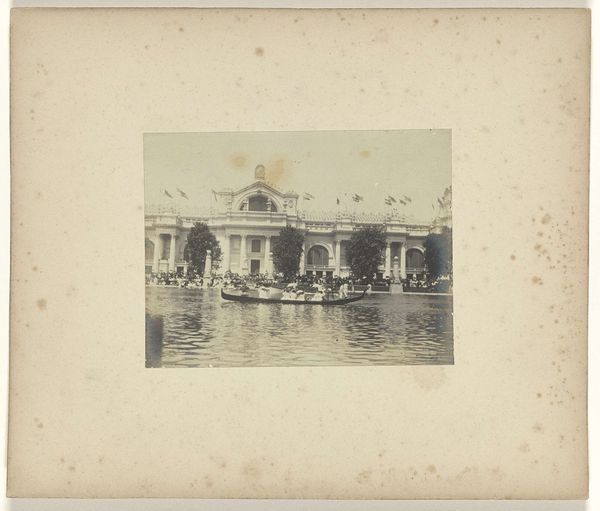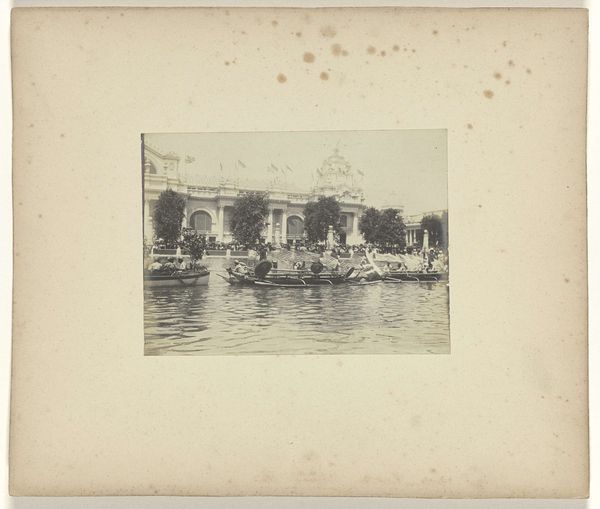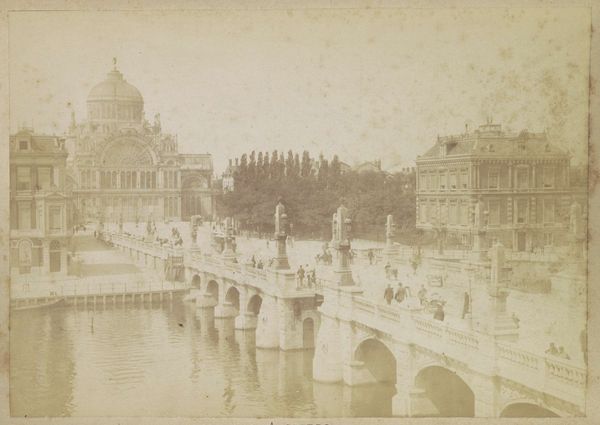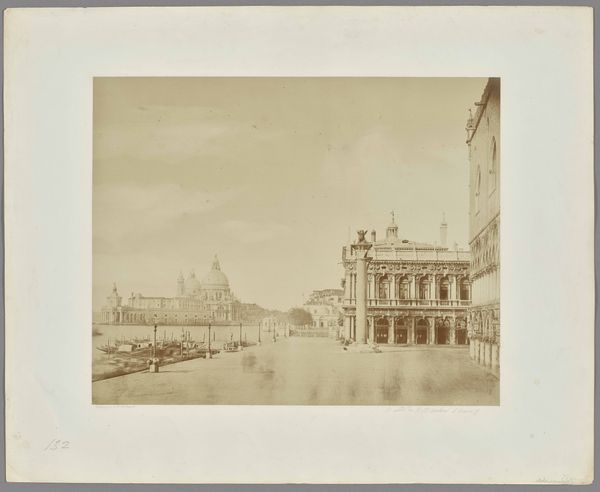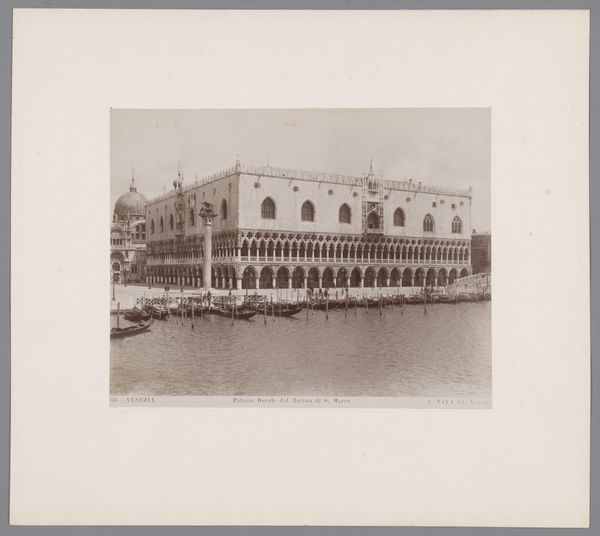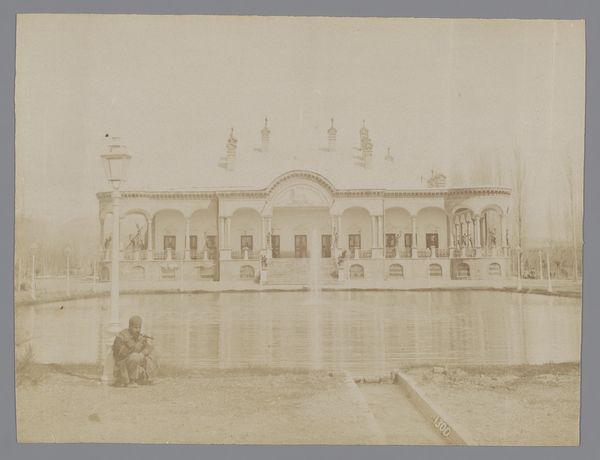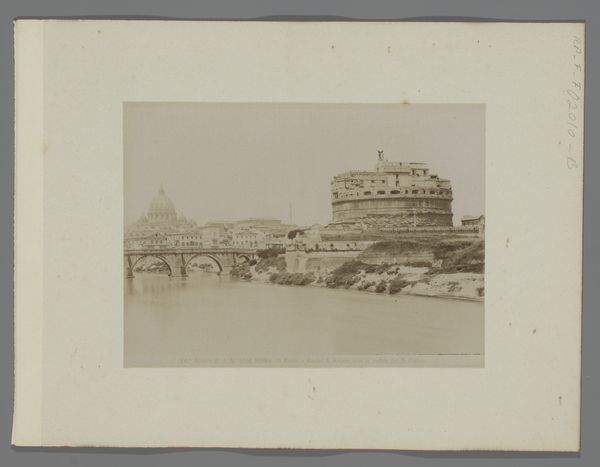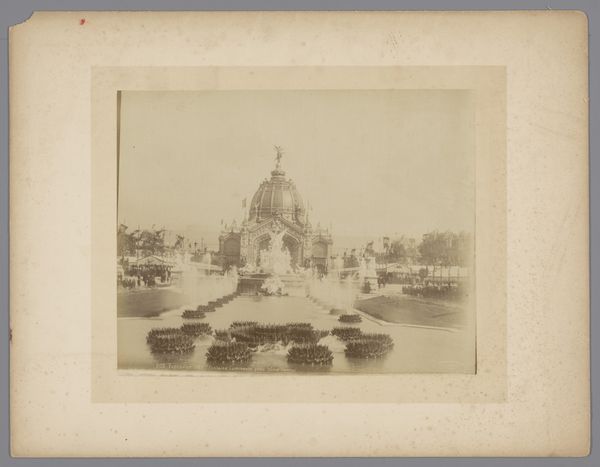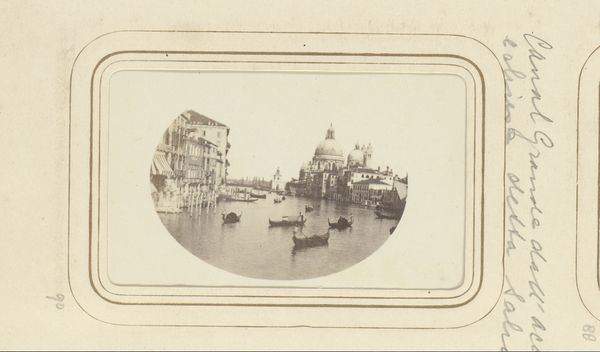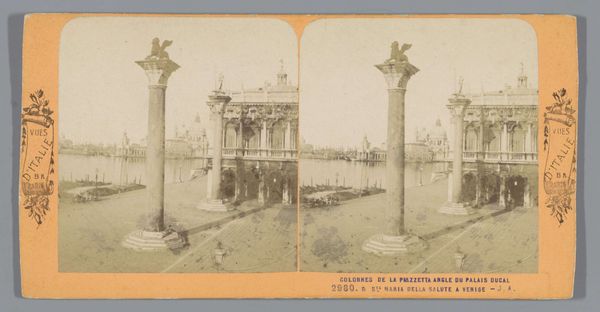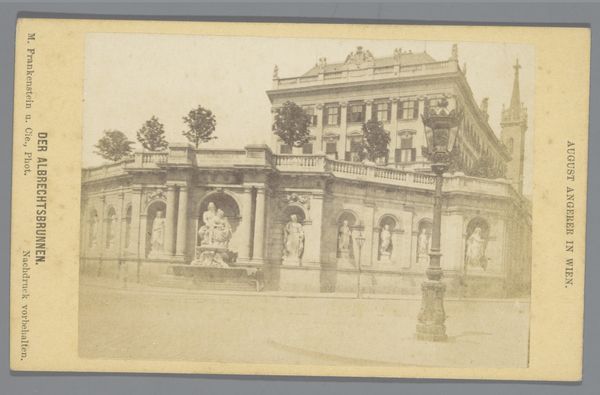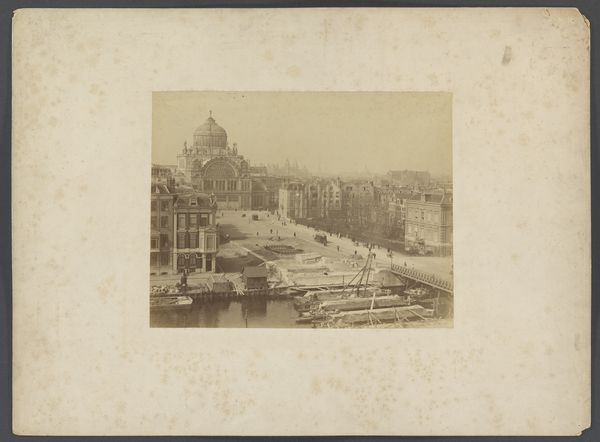
Filipijnse jongens in kano’s op de wereldtentoonstelling in St. Louis (Louisiana Purchase Exposition), 1904 1904
0:00
0:00
janschuller
Rijksmuseum
photography, photomontage, gelatin-silver-print
#
landscape
#
photography
#
photomontage
#
orientalism
#
gelatin-silver-print
#
early-renaissance
Dimensions: height 81 mm, width 105 mm
Copyright: Rijks Museum: Open Domain
Editor: This is a photograph called "Filipijnse jongens in kano’s op de wereldtentoonstelling in St. Louis", taken in 1904 by Jan Schüller. It’s a gelatin-silver print and appears to be a photomontage. I'm immediately struck by the contrast between the grandeur of the building and the small canoes; it feels quite staged. What's your interpretation of this piece? Curator: It’s impossible to look at this image without considering the socio-political context of the 1904 World’s Fair. These fairs were, in many ways, showcases for empire and colonial power. The presence of Filipino boys in canoes isn't simply a quaint scene; it represents the United States' relatively new colonial project in the Philippines following the Spanish-American War. Editor: So, the boys are there almost as exhibits themselves? Curator: Precisely. Often, colonized people were displayed in reconstructed "villages" to demonstrate, in the eyes of the colonizers, the "primitive" state from which they needed to be lifted. This photograph, likely intended as documentation or even promotion of the fair, becomes deeply problematic when we consider its place in the history of orientalism and colonial exploitation. Look at the building: it’s a symbol of Western progress, isn’t it? Editor: It certainly is. It’s almost overwhelming compared to the tiny canoes. This image does more than document; it seems to reinforce a power dynamic. I had only considered the aesthetic, now I am forced to think about its legacy. Curator: That's exactly it. The politics of imagery are always at play. How institutions, like the fair, use images and representations becomes a crucial site for understanding broader societal power structures. It reflects both the aspirations and the anxieties of the period. What would you say you learned looking at the photo and discussing it? Editor: The power of images to convey and even enforce ideologies. This image, while seemingly innocent at first, speaks volumes about the relationship between the US and its colonies at the turn of the century. It’s much darker than I initially thought. Curator: Indeed. It’s a good example of how analyzing an artwork through a historical lens allows us to uncover uncomfortable truths and consider the enduring legacy of these power dynamics.
Comments
No comments
Be the first to comment and join the conversation on the ultimate creative platform.
